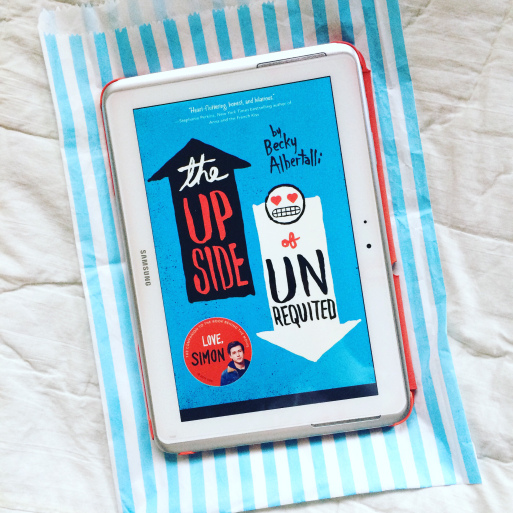 This is the time of year when many schools and teachers are assessing students to look at progress and recalibrate teaching to meet end-of-year benchmarks and goals. This data can provide us important information for supporting our learners, but I also notice that it can cause some undo anxiety that I would like us to avoid or lessen. I want us to reframe our perceptions around these formative assessments and instead of dreading them, embrace them for how they can help us help kids.
This is the time of year when many schools and teachers are assessing students to look at progress and recalibrate teaching to meet end-of-year benchmarks and goals. This data can provide us important information for supporting our learners, but I also notice that it can cause some undo anxiety that I would like us to avoid or lessen. I want us to reframe our perceptions around these formative assessments and instead of dreading them, embrace them for how they can help us help kids.
In our district we do a writing prompt (cold write from a prompt) and we use the Fountas & Pinnell Benchmark Assessment for reading. These are not standardized tests with outside scorers, they are administered by teachers with various levels of expertise, experience, and investment in the outcomes. This is by no way an implication that we are incompetent, far from it. I am merely reminded that we are humans and not machines who administer and score objectively. This can have implications for the scores that students receive. We need to be cautious not to take these scores as absolutes or statistically significant. They give us a ball park idea of how our students are doing in relation to norms.
The levels themselves are not scientifically exact. Human beings created and evaluated the benchmark texts to meet certain criteria represented by each level. We know levels are often revised on books when we receive updated lists in which books are reassigned higher or lower levels. It is imperative to remember that books are a transaction between the reader and the text. The background knowledge and schema a child brings to the text plays an incredibly important role in their ability to access and comprehend the information. A single book should never be the determining factor for the success (or failure) of a reader.
Arguably, the best purpose of these assessments is diagnostic. It is not the score that will help students moving forward, it is the observations and the expert teaching we can contemplate with next-steps to scaffold student learning. A child may be “stuck” on the same level of books in two consecutive benchmark periods but may have become much more independent, fluent, flexible, and strategic in their reading. This will not show up on a spreadsheet, but it is growth. It is success for that reader. If too much emphasis is placed on the level, it will be all about that level and not the observable and actionable behaviors or growth.
We cannot emphasize this enough to others…a child is not a level. Johnny is not a level P. Johnny may be successful at books leveled P because they have the right mix of supports and challenges, but Johnny may read books at level S if he is interested, invested, and engaged with the subject. He may feel more comfortable choosing books at an easier level for independent reading. Johnny should never think of himself as a level, or have limits placed on his choices that are tied solely to a level.
Finally, I see the expected benchmarks associated with these assessments as risk indicators. Reaching a certain level should not be construed as SUCCESS or FAILURE. If a child attains success with the expected benchmark, they are at a lower risk of failure than a student who has not yet achieved that expectation, but that is not the same as failure. These scores can help us rethink who is at risk, and who may need more complexity so that we can plan for the growth of all learners. Many of us know stories of students who have ‘passed’ levels in one classroom or program but could not in another context. This should remind us that it is not an exact and statistically absolute score. Students who luckily pass a level may lose valuable services that they no longer qualify for, but still need. Not really lucky there! When passing a single text or writing a single story is the goal for success we are creating a high-stakes (high stress) test rather than a formative assessment.We have plenty of high stakes tests already imposed upon us. Let’s not self-impose even more.
Assessment is not a dirty word. It actually stems from the Latin “assessus“, which means seated beside. So let’s sit beside our students in the next month or so and assess what they bring to the table as readers and writers. Let’s not observe from a deficit model and focus on the errors. Let’s notice and build on their strengths, plan ways to support their needs, and look beyond that score that we log into a spreadsheet. Let’s use the assessments as the teaching tool it was designed to be. Let’s reclaim our assessments as something positive for teaching and learning.
What’s On My Radar?We Will Not Be Silent: The White Rose Student Resistance Movement That Defied Adolf Hitler by Russell Freedman

This text was just named an Honor Book for the Robert F. Sibert Informational Book Award (for most distinguished informational book for children). I find it incredibly timely as we see a new generation of people who are building resistance to what they find unjust or unacceptable in their lives.
In this beautifully written text, Freedman tells the story of Hans Scholl and his sister, Sophie who were members of the Hitler Youth, but began to question the actions and beliefs they were required to embrace. Together with some friends they formed the White Rose movement in which members distributed leaflets urging Germans to defy the Nazi government. They risked imprisonment and death to stand up for what they believed. The archival photographs and prints help us to visualize the world at that time and see just how much resistance the White Rose would need to build to change the minds of their countrymen who could not resist the influence of the Nazis. Powerful story.
Advertisements Share this:





